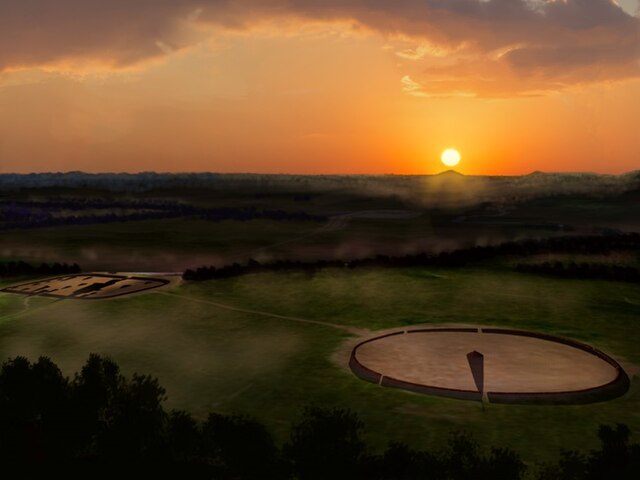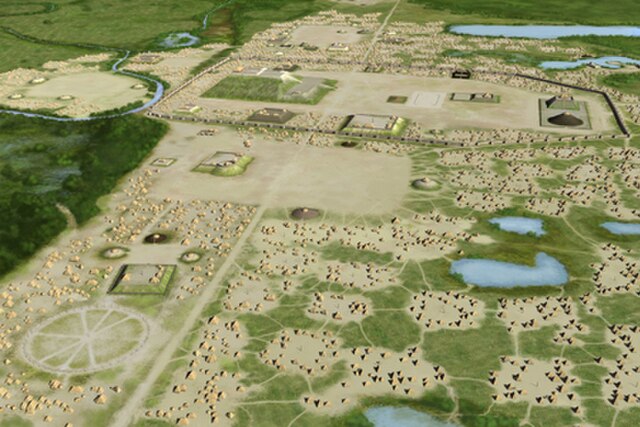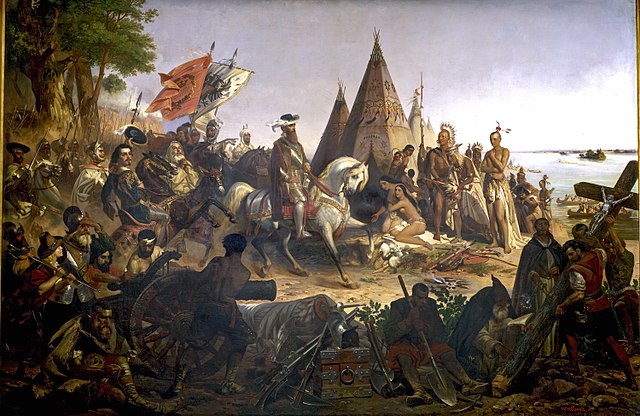The Mississippian culture was a Native American civilization that flourished in what is now the Midwestern, Eastern, and Southeastern United States from approximately 800 to 1600, varying regionally. It was known for building large, earthen platform mounds, and often other shaped mounds as well. It was composed of a series of urban settlements and satellite villages linked together by loose trading networks. The largest city was Cahokia, believed to be a major religious center located in what is present-day southern Illinois.
Approximate areas of various Mississippian and related cultures
A priest with a ceremonial flint mace and severed sacrificial head, based on a repoussé copper plate
Mississippian copper plates
Reconstruction of the Birdman burial at Cahokia.
Native Americans in the United States
Native Americans, sometimes called American Indians, First Americans, or Indigenous Americans, are the Indigenous peoples of the United States or portions thereof, such as American Indians from the contiguous United States and Alaska Natives. The United States Census Bureau defines Native American as "all people indigenous to the United States and its territories, including Native Hawaiian and Other Pacific Islanders, whose data are published separately from American Indians and Alaska Natives". The U.S. census tracks data from American Indians and Alaska Native separately from Native Hawaiian and other Pacific Islanders, who include Samoan Americans and Chamorros.
Comanche Indians Chasing Buffalo with Lances and Bows, a mid-19th century portrait depicting the Comanche tribe by George Catlin, now on display at the Smithsonian American Art Museum in Washington, D.C.
Shriver Circle Earthworks and the Mound City Group (on the left), c. 200 BCE to c. 500 CE, depicted in a 2019 portrait
A 2013 illustration of Cahokia, the largest Mississippian culture site, c. 1050 CE to c. 1350 CE
Spanish Empire explorer Hernando DeSoto greeting Native Americans on the Mississippi River, c. 1541, depicted in an 1853 portrait by William Henry Powell, which now hangs in the United States Capitol rotunda in Washington, D.C.








